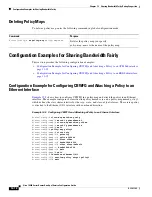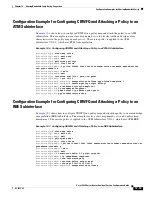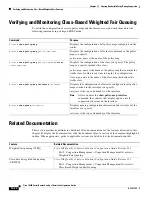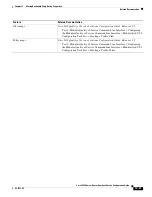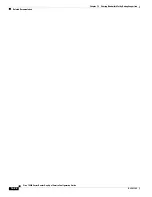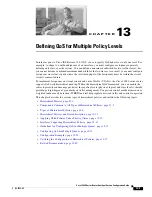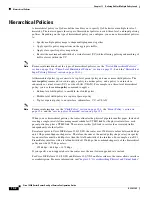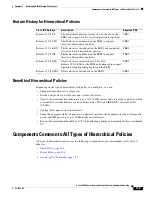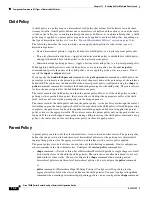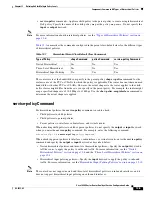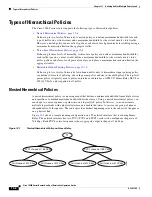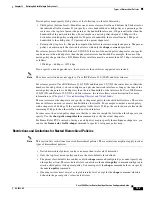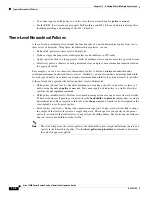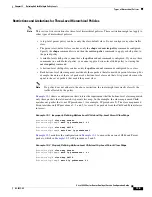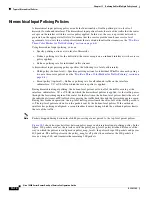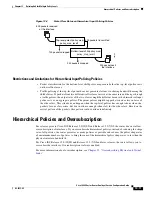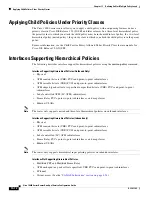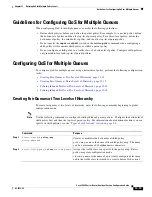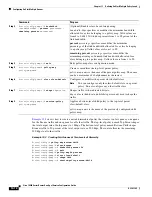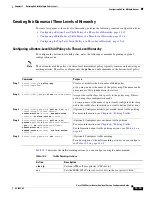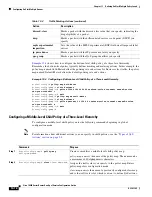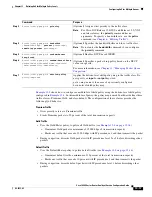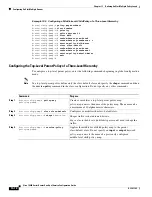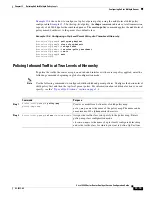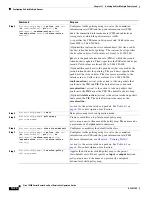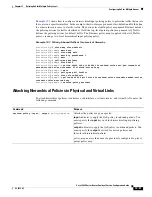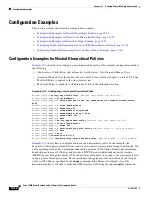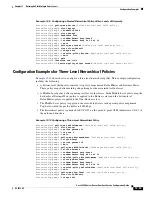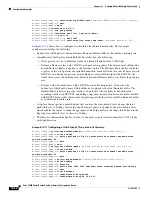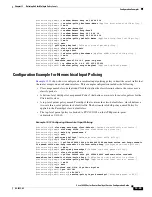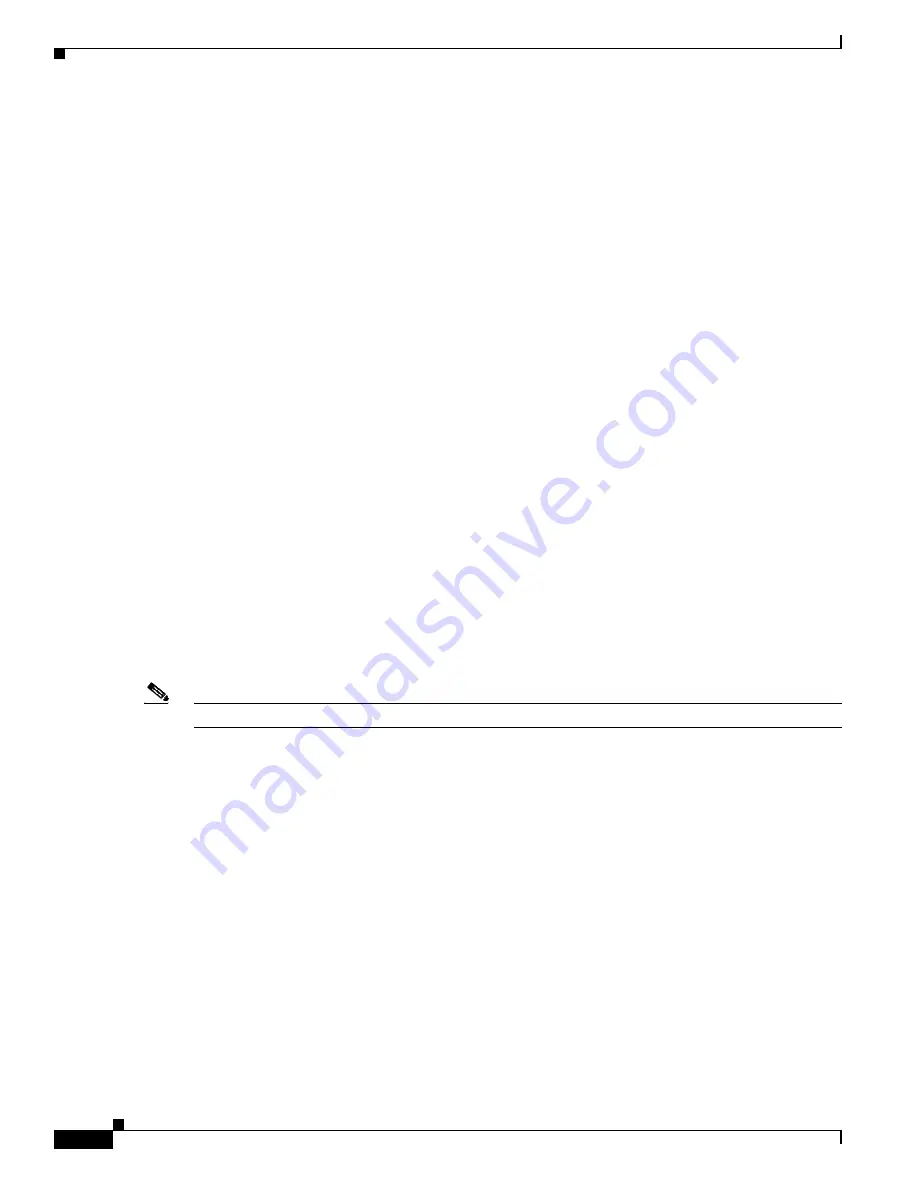
13-10
Cisco 10000 Series Router Quality of Service Configuration Guide
OL-7433-09
Chapter 13 Defining QoS for Multiple Policy Levels
Types of Hierarchical Policies
Hierarchical Input Policing Policies
A hierarchical input policing policy extends the functionality of traffic policing to two levels of
hierarchy for inbound interfaces. The hierarchical input policer limits the rate of the traffic that the router
accepts on the interface with the service policy applied. In this way, the service provider network is
protected on the aggregate traffic level to ensure that the service provider can honor service level
agreements. A two-rate three-color policer limits the rate of individual traffic streams (see the
“Two-Rate
Three-Color Marker for Traffic Policing” section on page 6-8
).
Using hierarchical input policing, you can:
•
Specify policing actions at two levels of hierarchy
•
Define a policing rate for the traffic that the router accepts on an inbound interface (with a service
policy applied)
•
Define a policing rate for individual traffic streams
A hierarchical input policing policy specifies the following two levels of hierarchy:
•
Child policy (bottom-level)—Specifies policing actions for individual IP traffic streams by using a
two-rate three-color policer (see the
“Two-Rate Three-Color Marker for Traffic Policing” section on
page 6-8
).
•
Parent policy (top-level)—Defines a policing rate for all inbound traffic on the interface,
subinterface, VC, or VLAN on which the service policy is applied.
During hierarchical input policing, the bottom-level policer acts on all of the traffic arriving at the
interface, subinterface, VC, or VLAN on which the hierarchical policer is applied. As the traffic passes
through the forwarding engine of the router for the first time, the bottom-level policer limits the rate of
the individual streams of IP traffic before passing the traffic back through the forwarding engine again.
During this feedback operation, the top-level traffic policer limits the rate of all of the traffic passed to
it. The top-level policer acts only on the packets sent by the bottom-level policer. If the outbound
interface has policing configured, a second feedback occurs during which the outbound policer limits
the rate of the traffic.
Note
Packets dropped during bottom-level child processing are not passed to the top-level parent policer.
Figure 13-2
shows how packets flow between policy maps in a hierarchical input policing policy. In the
figure, 500 packets arrive at the interface with the policy_map_level1 policy attached. Because of the
way in which the policer is configured in policy_map_level1, the policer drops 100 packets and passes
400 packets. The traffic policer in the policy_map_level2 policy then evaluates the 400 packets it
receives, drops 200, and transmits the remaining 200 packets.

